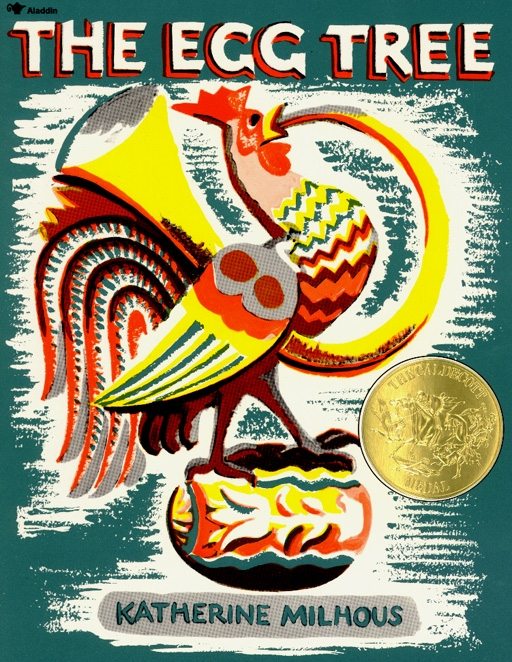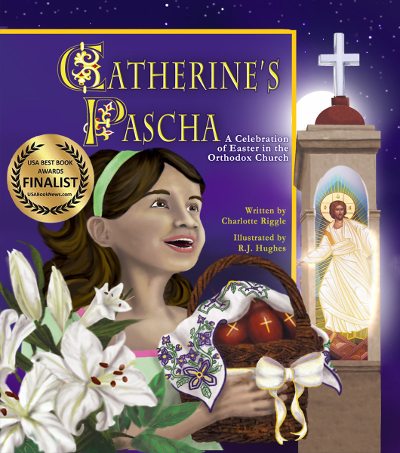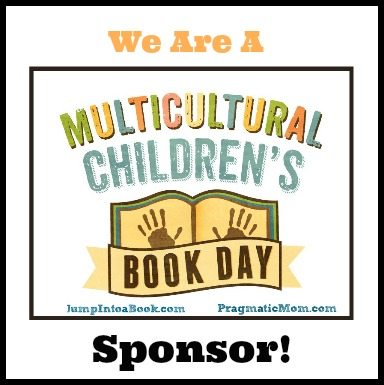The Egg Tree by Katherine Milhous is an old book, but a distinguished one. First published in 1950, it is the only Easter book ever to win the Caldecott Medal.
And so The Egg Tree has been on my wishlist for some time now, and I was delighted when I stumbled across it at a used bookstore recently. I expected to be even more delighted when I read the book. And yet …
And yet, at least for me, the book hasn’t aged well.
It’s not just that the illustrations are dated. They are, of course. In 1950, children’s books were not printed with full-color illustrations. Some, like Robert McCloskey’s classic Blueberries for Sal used no color at all. Others were printed with just two colors of ink – black and one other color was most common. Sometimes a book might have additional colors on some of the pages, creating brighter, more colorful spreads. And that approach worked beautifully in so very many books.
I expected it to work in this book. It is, after all, a Caldecott book, and the story takes place among the Pennsylvania Dutch people. The old-fashioned feel of the art should have supported the story perfectly. And yet …
And yet the illustrations muddy the story instead of clarifying it. They make it harder to follow. Katy, the protagonist, is at her grandmother’s farm with her brother Carl and their cousins. It is the first time Katie and Carl have spent Easter with their grandmother. When you first see them, it’s on one of the multicolor spreads. They are leaning out the window of their grandmother’s red house, and they both have yellow hair.
When you turn the page, you see six children hunting Easter eggs. And nary a one has yellow hair. These must be the cousins, then.
Turn the page again, and there are six children again. Are they the same six as on the previous page? Their clothes are different, so there must be more cousins there at Grandmother’s house.
I had to go back through the book to understand that the pictures with six children show Katy and Carl and their four cousins. It’s just that, as you turn the pages, their hair and clothing changes. Suzy’s brown dress turns green. Appolonia sometimes wears pale orange with a white cap over dark brown hair, and sometimes her outfit is white, with a blue bonnet over yellow hair. I have no idea which child in the pictures is Luke and which is Johnny – they are as indistinguishable as Rosenkrantz and Guildenstern in both story and art – but they have magical morphing clothing as well.
Perhaps a compelling story could have redeemed the art. The story is gentle and quiet. Katy has some anxious moments when she fears that she will be the only child not to find any eggs. But, aside from that, there is no tension, no drama, because there isn’t much in the way of a story.
Or perhaps it would be more fair to say that there are two stories, set a year apart. The second, brief story, is something of an epilogue to the first. But neither story is compelling.
And, sadly, there’s not enough richness and depth to the Pennsylvania Dutch setting to make up for the rest of the weaknesses. I found The Egg Tree as hollow and unsatisfying as a cheap chocolate bunny.
Read More
Easter Picture Books Keep Pascha Present: You might be tempted to put the Easter picture books away during Bright Week. Don’t do it! By keeping them out, you’ll help your little one understand that Easter lasts more than a single day.
The complete list of multicultural Easter picture books: If you’re looking for picture books that show people celebrating the Resurrection of our Lord Jesus Christ, you’ll find them on this list. All of them. (Well, almost all.)
17 essential picture books for Orthodox Christian kids: If you’re looking for picture books that include stories about Orthodox Christian people and traditions, you’ll find them on this list.
Books by Charlotte Riggle
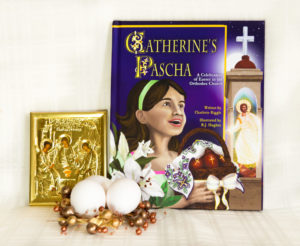
This holiday classic shares the joy of Pascha through the eyes of a child. Find it on Amazon or Bookshop.org.
![]()
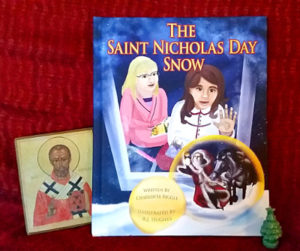
This delightful story is filled with friendship, prayer, sibling squabbles, a godparent’s story of St. Nicholas, and snow. Lots and lots of snow. Find it on Amazon or Bookshop.org.
![]()

In this collection of essays, women who are, or have been, single mothers share stories of their relationships with saints who were also single mothers. Charlotte’s story of the widow of Zarephath highlights the virtue of philoxenia. Find it on Amazon or Park End Books.


